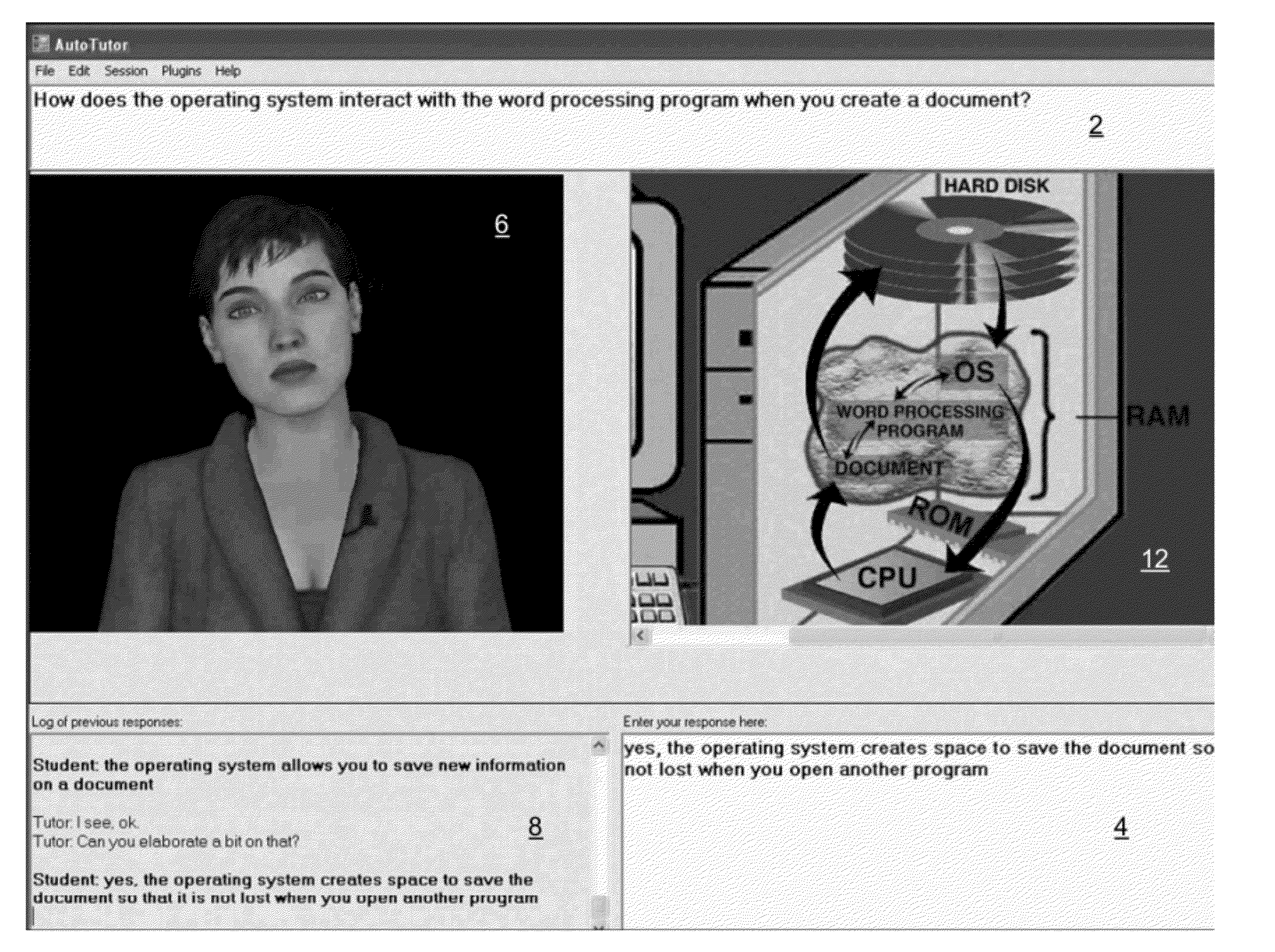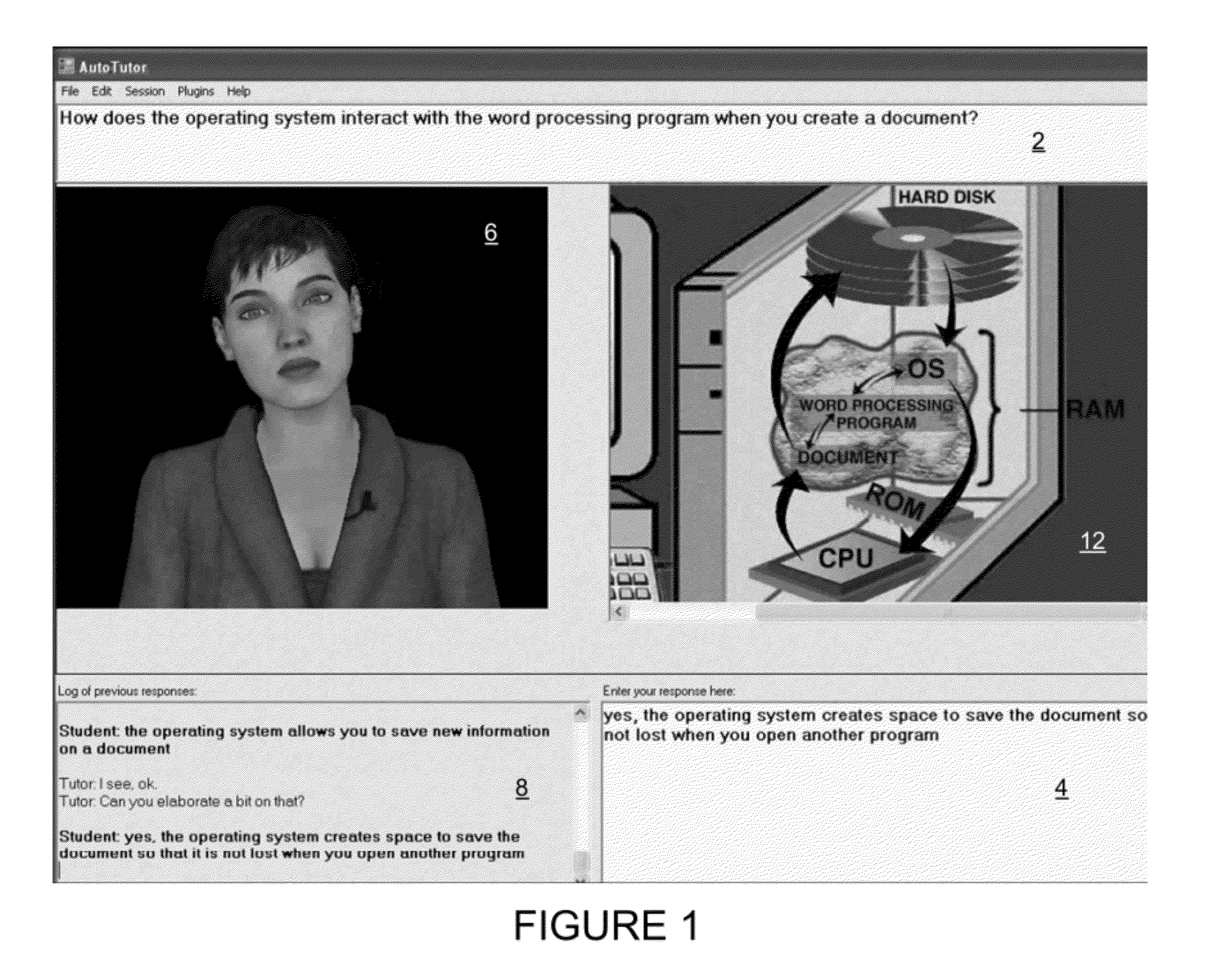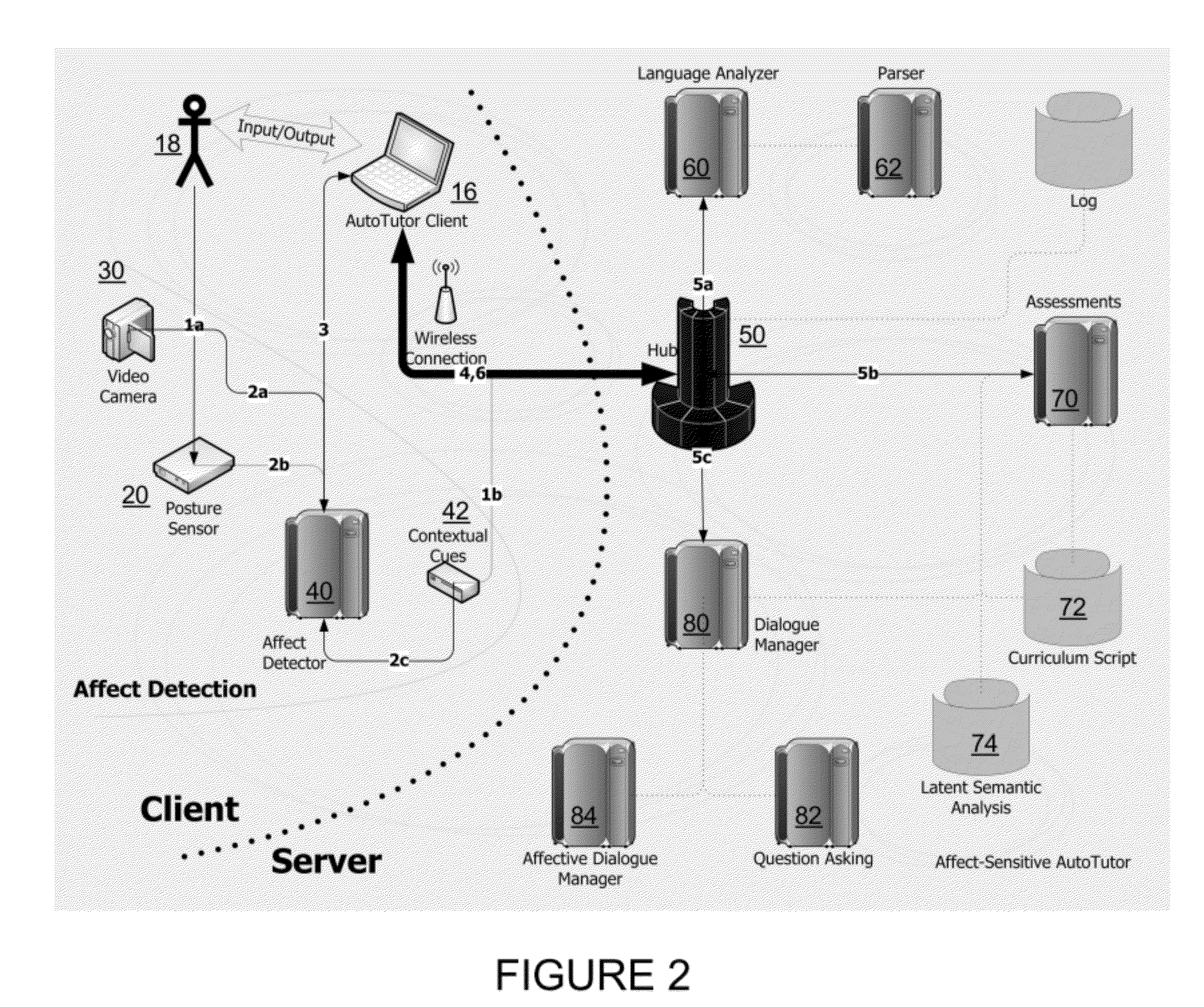Affect-sensitive intelligent tutoring system
a tutoring system and affect-sensitive technology, applied in the field of affect-sensitive intelligent tutoring system, can solve the problems of long responses and deep reasoning, and achieve the effect of prolonging a state of confusion, minimizing frustration, anger, boredom
- Summary
- Abstract
- Description
- Claims
- Application Information
AI Technical Summary
Benefits of technology
Problems solved by technology
Method used
Image
Examples
Embodiment Construction
[0016]A typical ITS has a number of separate modules. A Domain Knowledge module contains the subject matter information that the tutor is teaching. A Student Model module maintains information about particular users, such as how far they have progressed on a topic and what errors they have made. A Diagnosis module contains the rules or algorithms that identify the student's knowledge gaps and misconceptions, whereas a Pedagogical module decides how the domain knowledge is presented and what training approaches to use. A Communication module is the user interface (e.g., keyboard, mouse, sensing device, screen display / layout, natural language) that presents the material to the learner and accepts learner input.
[0017]In various embodiments, the present invention comprises several improvements over an existing ITS known as “AutoTutor” (while portions of the subsequent discussion herein specifically refer to the AutoTutor ITS, these references are not intended to be limiting, and various...
PUM
 Login to View More
Login to View More Abstract
Description
Claims
Application Information
 Login to View More
Login to View More - R&D
- Intellectual Property
- Life Sciences
- Materials
- Tech Scout
- Unparalleled Data Quality
- Higher Quality Content
- 60% Fewer Hallucinations
Browse by: Latest US Patents, China's latest patents, Technical Efficacy Thesaurus, Application Domain, Technology Topic, Popular Technical Reports.
© 2025 PatSnap. All rights reserved.Legal|Privacy policy|Modern Slavery Act Transparency Statement|Sitemap|About US| Contact US: help@patsnap.com



